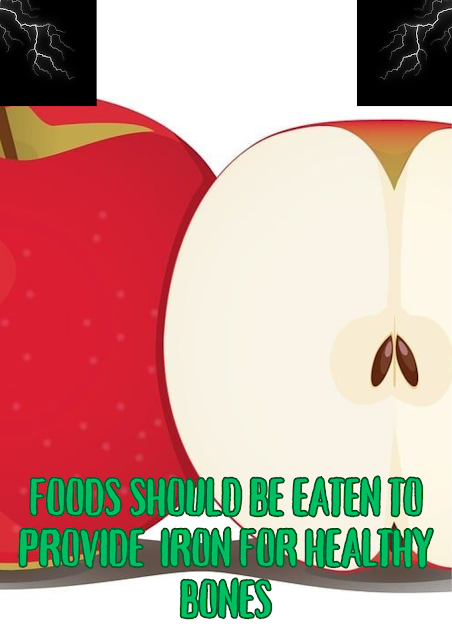Foods Should Be Eaten to Provide Iron for Healthy Bones
Iron is an essential mineral that plays a crucial role in many bodily functions, including the formation of healthy red blood cells, which are responsible for oxygen transport. While iron is often associated with energy levels and anemia prevention, it also indirectly supports bone health by ensuring that bones receive sufficient oxygen and nutrients for maintenance and repair. Incorporating iron-rich foods into your diet is vital for overall health, including maintaining strong and healthy bones.
1. Red Meat: A Rich Source of Heme Iron
Red meat, such as beef and lamb, is one of the best sources of heme iron, the type of iron that is most easily absorbed by the body. Heme iron, found in animal-based foods, is more bioavailable than non-heme iron, which comes from plant-based sources. Regular consumption of lean red meat can help maintain adequate iron levels, which in turn supports bone health by ensuring the bone marrow receives enough oxygen to produce healthy bone cells.
- Scientific Reference: Hurrell, R., & Egli, I. (2010). Iron bioavailability and dietary reference values. American Journal of Clinical Nutrition, 91(5), 1461S-1467S. doi:10.3945/ajcn.2010.28674F
2. Spinach: A Plant-Based Powerhouse
Spinach is a leafy green vegetable that is particularly rich in non-heme iron. While the iron in spinach is not as easily absorbed as the heme iron found in animal products, it still contributes to your daily iron intake, especially when combined with vitamin C-rich foods, which enhance iron absorption. Spinach also contains calcium, magnesium, and vitamin K, all of which are vital for bone health.
- Scientific Reference: Lynch, S. R. (1997). Interaction of iron with other nutrients. Nutrition Reviews, 55(4), 102-110. doi:10.1111/j.1753-4887.1997.tb06466.x
3. Lentils: A Versatile Iron Source
Lentils are a great plant-based source of iron, providing a significant amount of non-heme iron per serving. They are also rich in protein, fiber, and other minerals such as magnesium and phosphorus, which support bone strength and density. Lentils can be added to soups, salads, and stews, making them a versatile and nutrient-dense addition to your diet.
- Scientific Reference: Haas, J. D., & Brownlie, T. (2001). Iron deficiency and reduced work capacity: a critical review of the research to determine a causal relationship. Journal of Nutrition, 131(2), 676S-688S. doi:10.1093/jn/131.2.676S
4. Fortified Cereals: A Convenient Option
Many breakfast cereals are fortified with iron, making them a convenient option for increasing your iron intake, especially for those following a vegetarian or vegan diet. Fortified cereals often contain added vitamins and minerals, such as vitamin D and calcium, which are essential for bone health. Choosing a cereal that is low in sugar and high in fiber can provide a nutritious start to your day while supporting both iron levels and bone health.
- Scientific Reference: Berner, L. A., Clydesdale, F. M., & Douglass, J. S. (2001). Fortification contributed greatly to vitamin and mineral intakes in the United States, 1989-1991. Journal of Nutrition, 131(7), 2177-2183. doi:10.1093/jn/131.7.2177
5. Pumpkin Seeds: A Nutrient-Dense Snack
Pumpkin seeds are small but mighty when it comes to their nutritional profile. They are a good source of non-heme iron, as well as magnesium, zinc, and omega-3 fatty acids, all of which are important for maintaining healthy bones. A handful of pumpkin seeds can be a healthy snack or a crunchy addition to salads, yogurt, or oatmeal.
- Scientific Reference: Ryan, E., Galvin, K., O'Connor, T. P., Maguire, A. R., & O'Brien, N. M. (2007). Phytosterol, squalene, tocopherol content, and fatty acid profile of selected seeds, grains, and legumes. Plant Foods for Human Nutrition, 62(3), 85-91. doi:10.1007/s11130-007-0052-y
6. Quinoa: A Protein-Packed Grain
Quinoa is a finished protein source, meaning it contains each of the nine fundamental amino acids that the body can't create all alone. In addition to being a good source of non-heme iron, quinoa is also rich in magnesium, phosphorus, and manganese, minerals that are vital for bone health. Quinoa can be used as a base for salads, as a side dish, or even as a breakfast porridge.
- Scientific Reference: Ranhotra, G. S., Gelroth, J. A., Glaser, B. K., Lorenz, K. J., & Johnson, D. L. (1993). Composition and protein nutritional quality of quinoa. Cereal Chemistry, 70(3), 303-305.
7. Shellfish: Iron-Rich Seafood
Shellfish, particularly oysters, clams, and mussels, are some of the best sources of heme iron. These seafood options are also rich in other nutrients that support bone health, such as calcium, phosphorus, and vitamin B12. Incorporating shellfish into your diet can be an effective way to boost your iron intake while enjoying a variety of flavors and textures.
- Scientific Reference: Bhat, R. V., & Srivastava, S. (2003). Oyster shell as a calcium supplement to iron-fortified diets. Food Chemistry, 80(4), 587-591. doi:10.1016/S0308-8146(02)00499-5
Conclusion
Maintaining healthy iron levels is essential for overall health, including bone health. While bones themselves do not store iron, the mineral plays an indirect yet crucial role in supporting bone density and strength. By incorporating a variety of iron-rich foods into your diet, such as red meat, spinach, lentils, fortified cereals, pumpkin seeds, quinoa, and shellfish, you can ensure that your body has the necessary resources to maintain strong, healthy bones. Combining these foods with other nutrients that support bone health, like calcium and vitamin D, will further enhance your efforts to keep your bones robust and resilient.
